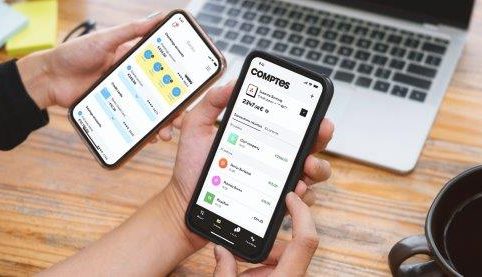France: Digital device ownership, usage growing
March 21, 2025

French bodies L’Arcep, le Conseil général de l’économie, l’Arcom et l’Agence nationale de la cohésion des territoires (ANCT) have published the findings of the Baromètre du numérique (Digital Market Barometer), an annual survey conducted by CREDOC in 2024 on the adoption of digital devices, and how their use has evolved over time.
Digital devices have already been widely adopted, and continue to be increasingly pervasive. In 2024, 98 per cent of people in France aged 12 and up owned a mobile phone (+4 points YoY). Of particular note, the already massively adopted smartphone has become virtually ubiquitous: 91 per cent of people aged 12 and up own one, alongside computers which are owned by 89 per cent of the population.
Smart speaker ownership is also rising (33 per cent, +4 points) and their rate of daily use has overtaken that of landline phones. Other connected devices (health, security, home automation, household appliances) are found in 40 per cent of households (+3 points). Online storage services, whose free versions are the most widely used, have been adopted by 50 per cent of the population. Underpinning this trend is the increasingly widespread access to fibre. In 2024, 75 per cent of people aged 12 and up with a fixed internet connection had a fibre or a cable plan (+8 points YoY), whereas copper line access was still predominant in 2020. This percentage of fibre users is rising even more significantly thanks to a surge in the proportion of fibre customers in municipalities with a population of under 20,000, which reached 69 per cent in 2024 and is nearing the fibre subscription rates found in large cities.
While the smartphone is taking hold as an essential tool, handset, operating system (OS) and browser suppliers have become key players in free and open access to content and services. Europe’s Digital Markets Act (DMA) came into force in March 2024, and seeks to guarantee open digital markets. Among its rules: operating systems are prohibited from imposing any software by default on their users. Four months after the DMA came into force, close to a third of smartphone owners report having been given the option of switching their mobile browser or being informed of these new provisions.
Questioned about how much time they spend on their devices for personal use, close to three out of four people report spending more than two hours a day, and one in four report spending more than five hours a day on their screens. Average screen time is around four hours a day, or a quarter of people’s waking hours. Also queried about how they perceive their screen time, 42 per cent of respondents said they feel that they spend too much time and, for 19 per cent of them, far too much time on their devices. The youngest among them stand out for being the heaviest consumers, but also the most sensitive to their overexposure: 61 per cent of 18 to 24-year-olds who spend more than three hours a day on their devices consider it excessive, compared to 31 per cent of people aged 70 and over.
An apparently determining factor in this sentiment is the use of digital platforms with a business model based on capturing users’ attention: 59 per cent of users who go on social media multiple times a day feel that their screen time is excessive. For equal screen time, regular social media users are two to three times more likely to feel that they spend too much time online compared to those who never use social media.
The percentage of mobile customers with a monthly allowance of more than 100 Gb has more than doubled in four years, going from 15 per cent to 32 per cent. Despite which, two thirds of people almost never consume their entire monthly allowance. It has nevertheless been observed that average data traffic on mobile networks (16.5 Gb a month per SIM card) continues to grow, albeit more slowly: an over 10 per cent increase in 2024, compared to around +25 per cent a year between 2020 and 2023.
Every household in France owns an average of around 10 digital devices with a screen, of which two are never used and could be recycled or sold. Smartphones in particular are kept after no longer being used: by more than half the population. People are keeping their smartphones longer, however. In 2020, only 16 per cent of those queried kept their smartphone for more than three years. This percentage grew to more than a quarter in 2024 (27 per cent), marking an 11-point increase in four years. Despite this trend, buying a new smartphone remains the norm, representing 78 per cent of all handset sales, compared to 22 per cent for used or repurposed smartphones.
Information has been available to mobile service users since January 2022 on their data traffic’s carbon footprint. Only a minority of users are aware of this fact, however: 40 per cent are aware that this information exists, and 28 per cent have consulted it. Among those who are aware, only a third say this information created an incentive for them to limit their data consumption, or 14 per cent of all mobile phone owners.
Other posts by :
- Russian satellite tumbling out of control
- FCC boss praises AST SpaceMobile
- Rakuten makes historic satellite video call
- Rocket Lab confirms D2C ambitions
- Turkey establishes satellite production ecosystem
- Italy joins Germany in IRIS2 alternate thoughts
- Kazakhstan to create museum at Yuri Gagarin launch site
- AST SpaceMobile gets $42 or $1500 price target
- Analyst: GEO bloodbath taking place
